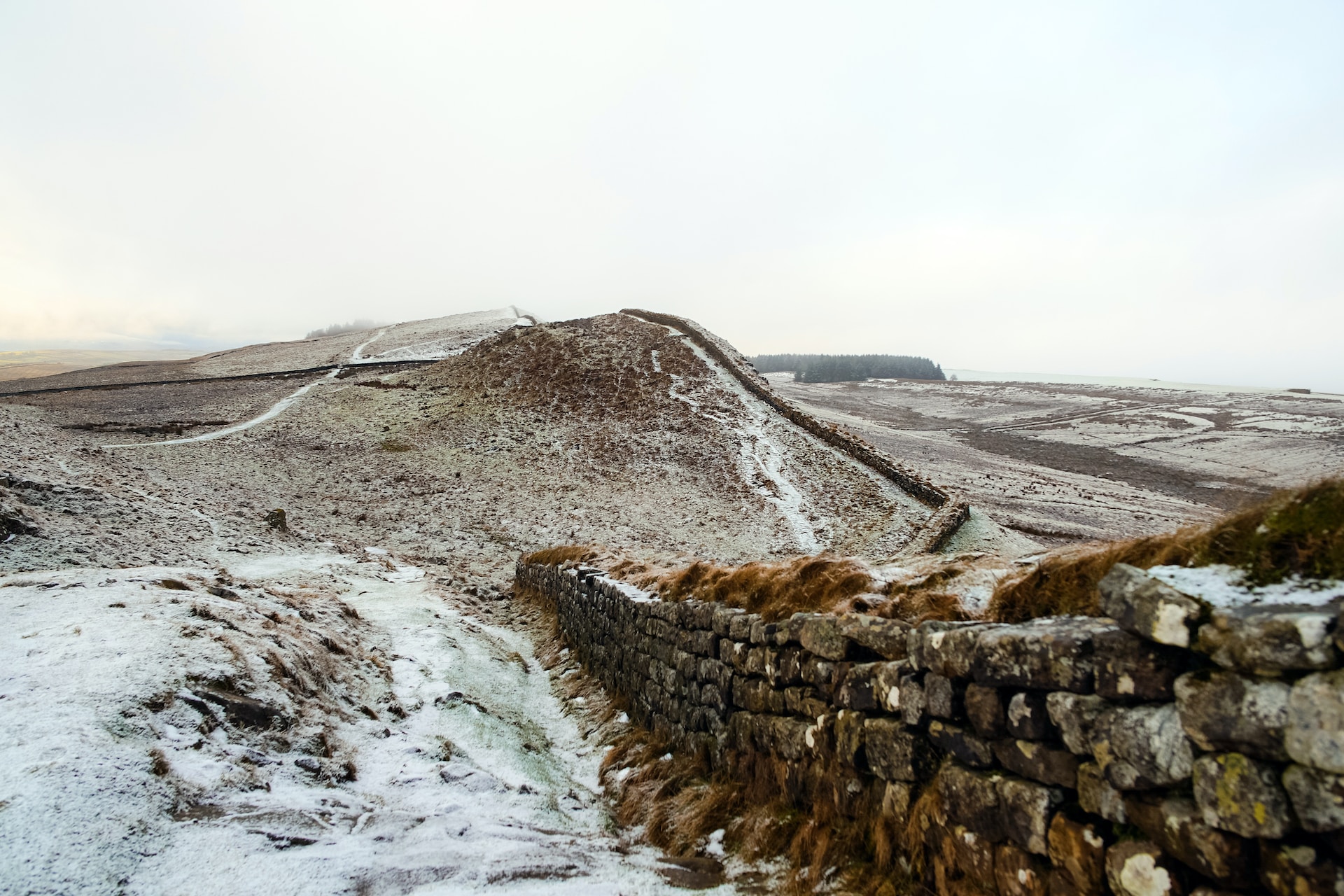Hadrian’s Wall

Hadrian’s Wall, also known as the Roman Wall, is a remarkable historical landmark located in Northern England. It was constructed by the Roman Empire in AD 122 during the reign of Emperor Hadrian. This ancient fortification, spanning approximately 73 miles (80 Roman miles), was built to mark the northwest frontier of the Roman Empire and defend the province of Britannia from external threats.
The wall stretches across the narrowest point of mainland Britain, from the banks of the River Tyne in the east to the Solway Firth in the west. Today, it stands as a testament to the engineering expertise of the Roman Empire, as well as a UNESCO World Heritage Site and one of the most popular tourist attractions in the United Kingdom.
Hadrian’s Wall was not merely a physical barrier but also served as a symbol of Roman power and authority. It comprised a series of forts, milecastles, barracks, and gateways strategically positioned along its length. The wall itself was primarily constructed from locally quarried stone, with a width of around 10 Roman feet (3 meters) and a height of up to 20 Roman feet (6 meters). Battlements and turrets added an additional layer of defense.
The primary purpose of Hadrian’s Wall was to control movement across the frontier, regulate trade and tax collection, and protect Roman interests in Britain. It effectively separated the Roman-controlled south from the unconquered north, allowing Roman soldiers to monitor and control any potential threats. Additionally, it facilitated the movement of Roman troops and goods throughout the province.
Hadrian’s Wall also included a significant network of roads and ditches. The Vallum, a broad ditch, ran parallel to the wall on its southern side. It served as a boundary marker and helped in controlling cattle movement. On the northern side, the earthworks were not fortified, as it was considered a hostile territory. Instead, smaller forts and outposts were constructed to ensure the security of the Wall and the Roman frontier.
Walking along Hadrian’s Wall, visitors can witness the grandeur of Roman engineering and experience the breathtaking landscapes of Northern England. Several of the wall’s forts have been excavated and transformed into museums and visitor centers, offering a glimpse into Roman life and military operations. The most famous of these forts include Housesteads, Vindolanda, and Birdoswald.
Archaeological discoveries along the wall have provided invaluable insights into the lives of the Roman soldiers stationed there. The Vindolanda tablets, for example, are a collection of wooden writing tablets preserved in the anaerobic conditions of the fort’s soil. These tablets contain personal correspondence, official documents, and other written records, shedding light on everyday life, administration, and military matters during the Roman occupation of Britain.
Hadrian’s Wall has long been a source of inspiration, influencing various works of art, literature, and even popular culture. From poems by William Wordsworth to scenes in the popular television series “Game of Thrones,” the wall’s imposing presence and historical significance continue to captivate the imagination of people around the world.
In conclusion, Hadrian’s Wall stands as a remarkable testament to Roman engineering prowess and their far-reaching influence. It is not solely a physical barrier but also a symbol of power, authority, and entwined cultures. Today, it serves as a cherished heritage site that attracts visitors from all walks of life, inviting them to delve into the rich history of the Roman Empire and the fascinating stories that lie within the ancient stones of Hadrian’s Wall.
